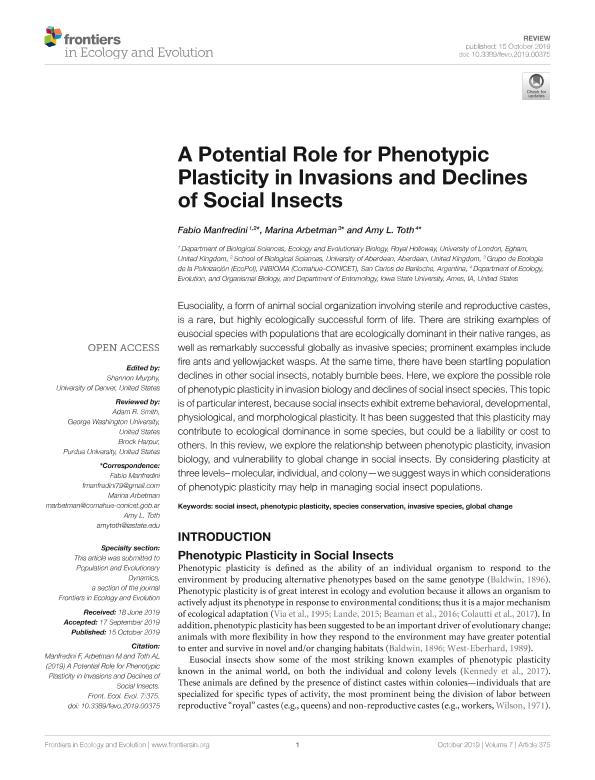Artículo
A Potential Role for Phenotypic Plasticity in Invasions and Declines of Social Insects
Fecha de publicación:
10/2019
Editorial:
Frontiers Media S.A.
Revista:
Frontiers in Ecology and Evolution
ISSN:
2296-701X
Idioma:
Inglés
Tipo de recurso:
Artículo publicado
Clasificación temática:
Resumen
Eusociality, a form of animal social organization involving sterile and reproductive castes, is a rare, but highly ecologically successful form of life. There are striking examples of eusocial species with populations that are ecologically dominant in their native ranges, as well as remarkably successful globally as invasive species; prominent examples include fire ants and yellowjacket wasps. At the same time, there have been startling population declines in other social insects, notably bumble bees. Here, we explore the possible role of phenotypic plasticity in invasion biology and declines of social insect species. This topic is of particular interest, because social insects exhibit extreme behavioral, developmental, physiological, and morphological plasticity. It has been suggested that this plasticity may contribute to ecological dominance in some species, but could be a liability or cost to others. In this review, we explore the relationship between phenotypic plasticity, invasion biology, and vulnerability to global change in social insects. By considering plasticity at three levels–molecular, individual, and colony—we suggest ways in which considerations of phenotypic plasticity may help in managing social insect populations.
Archivos asociados
Licencia
Identificadores
Colecciones
Articulos(INIBIOMA)
Articulos de INST. DE INVEST.EN BIODIVERSIDAD Y MEDIOAMBIENTE
Articulos de INST. DE INVEST.EN BIODIVERSIDAD Y MEDIOAMBIENTE
Citación
Manfredini, Fabio; Arbetman, Marina Paula; Toth, Amy L.; A Potential Role for Phenotypic Plasticity in Invasions and Declines of Social Insects; Frontiers Media S.A.; Frontiers in Ecology and Evolution; 7; 10-2019; 1-17
Compartir
Altmétricas




